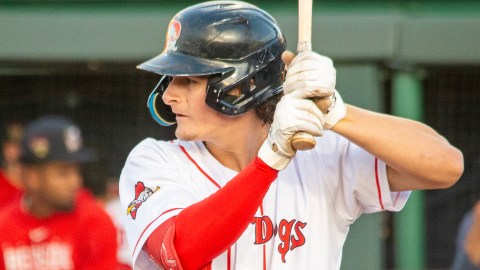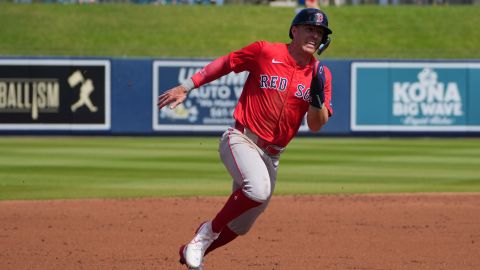Major League Baseball made small tweaks to speed up pace of play for the 2018 season, but Minor League Baseball is taking things to another level with the rule changes it announced Wednesday.
All levels of Minor League Baseball now will begin extra innings with a runner on second base. Mound visits will be limited throughout games (based on the level), and Triple-A and Double-A will implement 15-second pitch clocks with no runners on base.
The new extra inning rule obviously is the craziest procedural change being made by Minor League Baseball (in partnership with Major League Baseball). Its goal is to reduce the number of pitchers used in extra innings and the inherent issues that stem from extra-inning games.
Here’s a breakdown of the rule changes that will be enforced this season by Minor League Baseball, via Wednesday’s press release:
Extra Innings
— At all levels of Minor League Baseball, extra innings will begin with a runner on second base. The runner at second base will be the player in the batting order position previous to the leadoff batter of the inning (or a substitute for that player). By way of example, if the number five hitter in the batting order is due to lead off the 10th inning, the number four player in the batting order (or a pinch-runner for such player) shall begin the inning on second base. Any runner or batter removed from the game for a substitute shall be ineligible to return to the game, as is the case in all circumstances under the Official Baseball Rules.
— For purposes of calculating earned runs under Rule 9.16, the runner who begins an inning on second base pursuant to this rule shall be deemed to be a runner who has reached second base because of a fielding error, but no error shall be charged to the opposing team or to any player.
Mound Visits
— Visits by coaches and position players will be limited based on the classification level. Triple-A clubs will be allowed six (6) visits per team, Double-A clubs will be allowed eight (8) visits per team, Single-A clubs will be allowed 10 visits per team and there will not be a limit on mound visits for Short Season and Rookie-level clubs.
— These mound visit limits will apply whether the game is scheduled for seven or nine innings.
— For any extra-innings played, each club shall be entitled to one additional non-pitching change mound visit per inning.
— Official Baseball Rule 5.10(l), which governs mound visits by a manager or coach, remains in effect (i.e., a pitcher must be removed on the second visit by a manager/coach in an inning).
15-Second Pitch Timer
— Pitchers at the Triple-A and Double-A levels will be allowed 15 seconds to begin their wind-up or the motion to come to the set position when no runners are on base.
— The pitcher does not necessarily have to release the ball within 15 seconds, but must begin his wind-up or begin the motion to come to the set position to comply with the 15-second rule with no runners on base.
— With runners on base, the pitch timer will go from 15 to 20 seconds.
— The timer shall start when the pitcher has possession of the ball in the dirt circle surrounding the pitcher’s rubber, the catcher is in the catcher’s box and the batter is in the dirt circle surrounding home plate.
— The timer will stop as soon as the pitcher begins his wind-up, or begins the motion to come to the set position.
— If the pitcher feints a pick off or steps off the rubber with runners on base, the timer shall reset and start again immediately.
— Umpires have the authority to stop the pitch timer and order a reset.
— Following any event (e.g., pick-off play) that permits the batter to leave the batter’s box, the timer shall start when the pitcher has possession of the ball in the dirt circle surrounding the pitcher’s rubber, and the catcher is in the catcher’s box.
— Following an umpire’s call of “time” or if the ball becomes dead and the batter remains at-bat, the timer shall start after the next pitch or play.
— Should the pitcher fail to begin his wind-up or begin the motion to come to the set position in 15 seconds with no runners on base, or 20 seconds with a runner on base, a ball will be awarded to the count on the batter.
— Should the batter fail to be in the batter’s box and alert to the pitcher with seven (7) or more seconds remaining on the pitch timer, a strike will be awarded to the count on the batter.
The first 15 days of the 2018 season (April 5-19) will serve as a grace period, with players receiving warnings for infractions. After that, the rules will be enforced as written.






